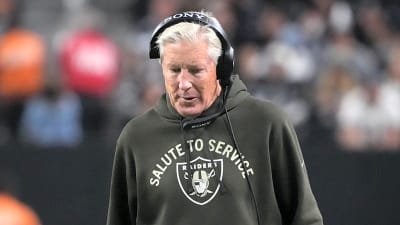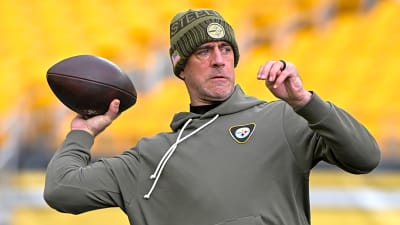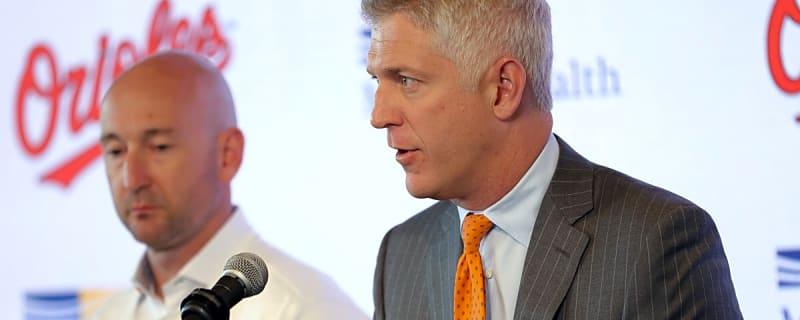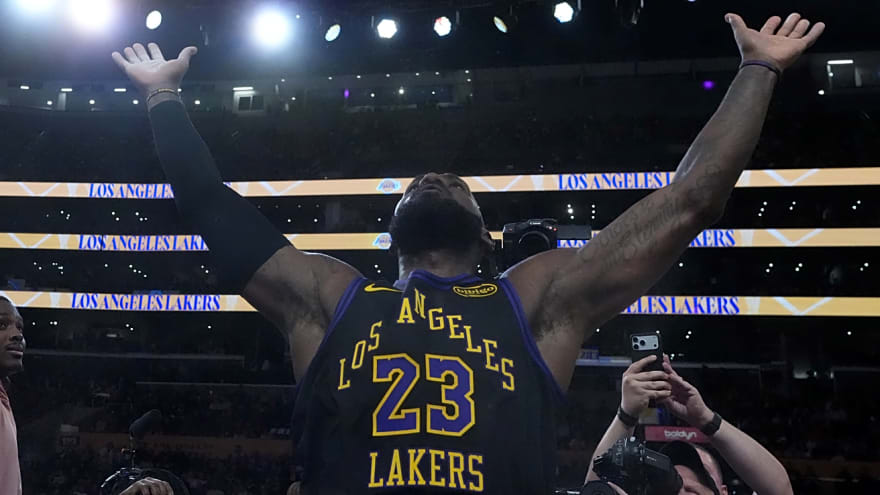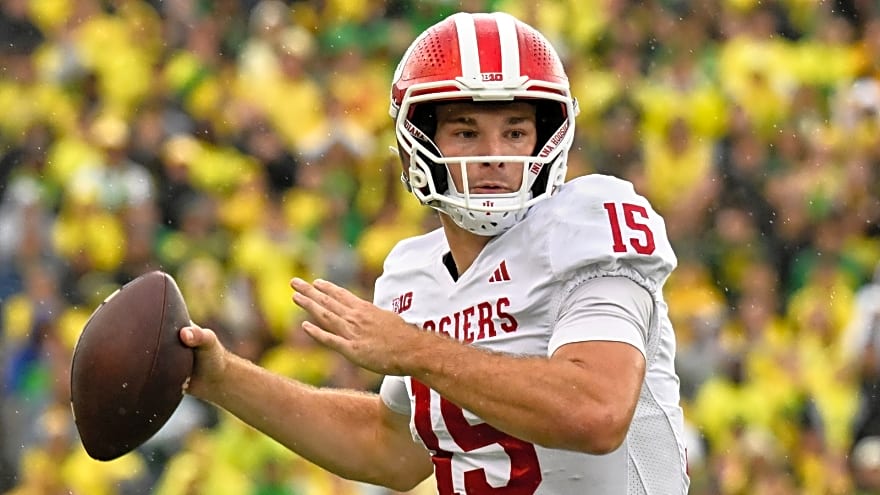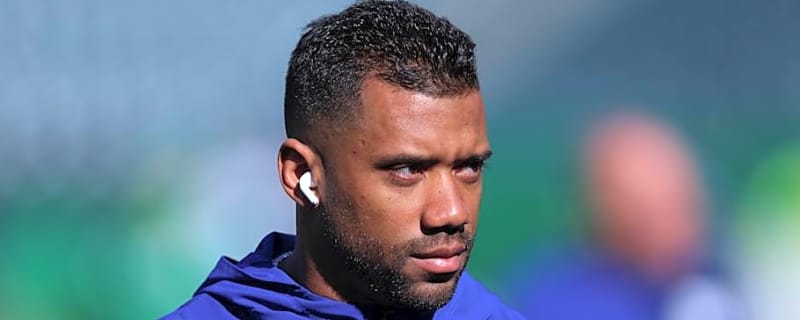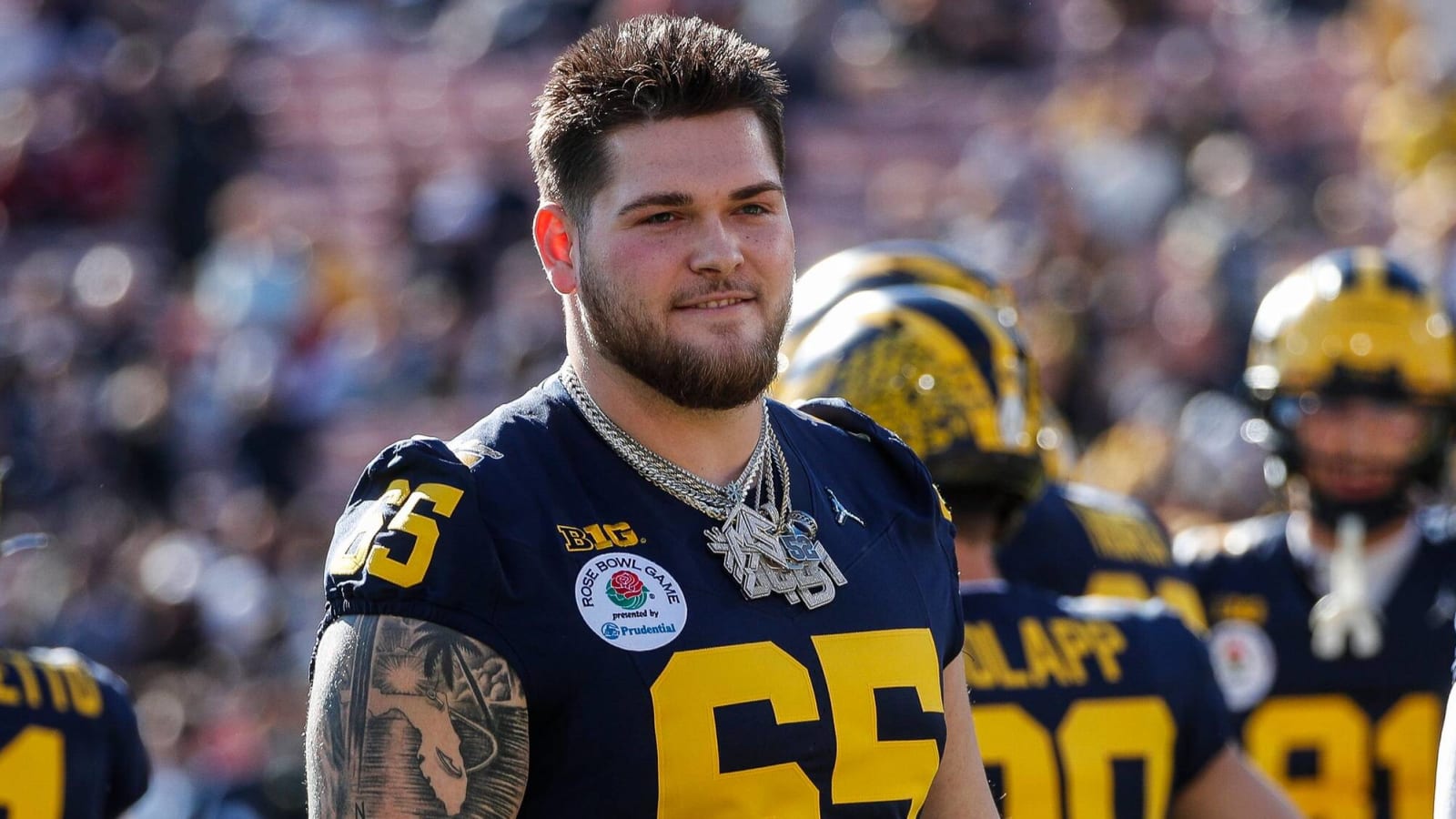
The 2024 NFL Draft is getting close, making it an excellent time to highlight some of the class' best players with scouting reports. Each report will include strengths, weaknesses and background information.
Here's our report on Zak Zinter.
Zak Zinter 2024 NFL COMBINE RESULTS
- Height: 6-foot-6
- Weight: 322
- 40-yard dash: Did Not Participate
- 10-yard split: DNP
- Vertical jump: DNP
- Broad jump: DNP
Zak Zinter 2024 NFL DRAFT SCOUTING REPORT
STRENGTHS
- Big guard with long arms who utilizes his hands and length to his advantage with an initial punch to control blocks.
- Nasty streak with good aggression and physicality – good edge and nastiness as a run blocker at the point of attack
- Strength displayed to displace lineman in duo schemes and controls second-level blocks once engaged
- He is a good run blocker who keeps his feet moving after initial contact to maintain and move defenders (pad level).
- He was able to anchor and hold his ground vs. power/bull rush once engaged in pass pro (leverage).
- He is a technically sound run blocker who plays with good angles and uses good leverage to secure his blocks.
- Strong hands and use of punch and arm extension to engage defenders and control them after initial contact
- He plays under control and takes good angles in the run game when asked to pull on edge or work up the field.
WEAKNESSES
- Upright style of play and leans into blocks, dropping his head, causing him to play off balance as a pass blocker
- Tendency to stop his feet in pass protection, causing him to struggle to stay engaged and anchor at times
- A stiff mover who struggles in space vs. quicker defenders due to poor lateral agility. Limited lateral quickness.
- Heavy-legged pass blocker who struggles with quick interior rushers or stunts/blitzes that make him COD
NFL TRANSITION
Zinter was a three-year starter at right guard for Michigan. He has good length and uses his hands well at the point of contact to engage and control defenders after initial contact. Zinter has a strong anchor to hold his ground and prevent continual push vs power/bull rush. He is a good run blocker who plays with good angles and pad level, which allows him to play with leverage to maintain his blocks and generate movement.
He is an average mover who plays with inconsistent footwork as a pass blocker and run blocker, which affects his ability to change direction to stay on balance and connected to his blocks at times. Zinter comes off blocks when needing to react to quicker defenders. He displays upright play at the point of attack as a pass blocker, causing him to lean or lunge into defenders with a good secondary pass rush, resulting in him playing off-balance at times.
Overall, Zinter is a good interior prospect with the size and strength to provide good depth initially in the NFL due to his lower leg injury in November. It remains to be seen if the injury will impact his movement and strength once he returns to the field. Zinter has the size and skill set to develop into a solid NFL starter in a few years and is worth a mid-round pick.
OTHER NOTES
Zinter came out of North Andover, Mass., as a four-star recruit and ranked 11th in the nation at guard and No. 3 in the state. He was a three-year starter with 42 career starts over his tenure with Michigan, all except one at right guard. Zinter earned All-Big Ten Honorable Mention in 2021, first-team All-Big Ten in 2022 and 2023 and first-team All-American in 2023.
In the past three seasons, Zinter had the sixth-most offensive snaps at right guard with all 2,233 snaps from that position. Of these plays he had 1,001 pass plays, allowing only nine pressures (0.9 percent pressure rate).
Zinter had 1,230 running plays with only 10 snaps of blown assignments (0.8 percent bad run block rate). Both of those block rates were at the top of the pack of the right guards with more than 2,000 total snaps over the last three seasons (second-best pass block rate and best run block rate).
More must-reads:
- Steelers receive massive Aaron Rodgers injury update ahead of Bears game
- Cowboys' Jerry Jones has made a decision about George Pickens
- The 'NFL QB rushing TD leaders' quiz
Breaking News
Trending News
Customize Your Newsletter
 +
+
Get the latest news and rumors, customized to your favorite sports and teams. Emailed daily. Always free!
TODAY'S BEST

Did Andy Reid throw Patrick Mahomes under the bus?
The Kansas City Chiefs haven't found much consistency this season. They lost their first two games of the year, then won five out of six. And just when it seemed that their offense was regaining its form from the early days of the dynasty, they regressed again. They've now dropped two games in a row to fall to 5-5, and their division-title aspirations may have already slipped through their fingers. Some of that has had to do with their lack of success in the running game. However, it's not because of head coach Andy Reid. Did Andy Reid take a subtle jab at Patrick Mahomes? In his weekly virtual media availability Monday, Reid stated that the Chiefs are still trying to run the ball. “We’re calling quite a few of the RPOs. Yesterday, they were giving us opportunities to throw the football, so we utilized the opportunities there, and those things ended up being as good as a run; we’re getting four-plus yards, and you go with it," Reid said. Then, he turned some heads with his follow-up comments, which some took as a subtle dig at quarterback Patrick Mahomes. "But the runs are being called; it’s just sometimes they get turned into passes in today’s world, you know, that’s how it goes," Reid continued. "But we are getting them in, and we have some hard runs where you just get up, line up, and go. Probably could call more of those.” Of course, that might not necessarily be a dig at his future Hall of Fame quarterback, but it's a testament to the disconnect within the team. The Chiefs have averaged 20 points per game in their last two games, all while rushing for 79 and 62 yards, respectively. Clearly, they will have to change that approach to salvage a season that has some fans thinking the dynasty is officially over.

Major domino falls for Yankees with Trent Grisham decision
Outfielder Trent Grisham is accepting his $22.025M qualifying offer and will return to the New York Yankees in 2026, reports ESPN’s Jorge Castillo. Players who accept a QO are considered free-agent signings and are thus ineligible to be traded prior to the following June 15 unless they consent to the move. Trent Grisham had a breakout season It’s at least a modest surprise, as Grisham is coming off a breakout year at the plate that saw him club a career-high 34 home runs. He slashed .235/.348/.464, thanks in no small part to a career-best 14.1% walk rate and a 23.6% strikeout rate that stood as the second-lowest in his career. Between that production, the fact that Grisham only just turned 29 earlier this month, and a thin outfield market in free agency, the stars seemed to align for him to pursue a weighty multi-year contract this winter. Instead, Grisham returns to the site of his breakout and will hold down a key role in an outfield that’s also currently slated to include Jasson Dominguez and Aaron Judge. The Yankees are interested in re-signing Cody Bellinger, have been linked to Kyle Tucker and also have DH Giancarlo Stanton at least loosely in the outfield mix. (He played 132 outfield innings in 2025.) How does Trent Grisham's decision affect the Yankees? Grisham’s return muddies the waters a bit, but GM Brian Cashman said recently that even if he accepted, it wouldn’t impact the team’s pursuit of a new deal with Bellinger, via the New York Post’s Greg Joyce. The Yankees wouldn’t have made the QO to Grisham if they believed his acceptance was a roadblock to bringing back Bellinger or signing Tucker. They’re surely glad to have him back. Even though his defensive grades took an unexpected downturn in ’25, he has the best defensive track record in center of the Yankees’ in-house options. While Grisham could have looked to cash in this winter, he’ll instead take a hefty one-year payday in what amounts to a bet on himself. Though he’s a left-handed bat, his power output was hardly a product of Yankee Stadium’s short right field porch. In fact, Grisham hit just .195/.326/.376 at home this season, compared to .254/.364/.506 on the road. If he can replicate this year’s huge power production, he could hit the market next offseason on the back of consecutive plus seasons at the plate and without the encumbrance of a qualifying offer. A big enough showing this year could realistically position Grisham for a $100M+ contract — particularly if his defensive grades rebound, too. The looming potential for a work stoppage is one other wrinkle to consider, but if anything, today’s glut of QO decisions suggests that players aren’t necessarily going to shy away from short-term deals that put them on the open market next year — at least not en masse. Grisham is one of four players to accept the QO, joining Gleyber Torres, Shota Imanaga and Brandon Woodruff in that regard. In a vacuum, any one of the four accepting his QO wouldn’t be considered a major surprise — but all four accepting in the same offseason is downright atypical. This marks the first time since the inception of the qualifying offer that more than three players have accepted a QO. With Grisham back in the fold, the Yankees’ projected payroll for the upcoming season jumps to about $263M, per RosterResource. They’ll now have about $286M of luxury-tax obligations, placing them just over the third penalty line. That means that the Yankees’ top pick in the 2026 draft will drop by 10 places, unless they’re able to sneak their luxury count back under $284M. Given the wide swath of offseason dealings that’s likely still on the table for Cashman and Co., that doesn’t seem to be a very likely outcome. In all likelihood, the Yankees will wind up in the top CBT penalty tier, just as they’ve done in each of the past three seasons. How does Trent Grisham's decision affect the rest of MLB? Turning to the rest of the league, Grisham’s early removal from the free-agent market — to a team that didn’t clearly need to retain him, no less — subtracts arguably the top center field option from the market. Bellinger, of course, can still play center but barely did so in 2025. Most teams probably consider him more of a corner outfielder/first baseman who can play occasional center field. Harrison Bader and Cedric Mullins are the two most notable options still on the market, though the former has been more of a part-time player and the latter is looking to bounce back from an awful 2025 showing. The market was light on center fielders to begin with and is even more so now, so teams looking for help at the position might be more inclined to turn to the trade market to address that deficiency.

Concerns continue to mount after No. 12 Kentucky's latest loss
After falling to in-state rival Louisville for the first time since 2020 last week, No. 12 Kentucky had its second test of the season on Tuesday night when it took on No. 17 Michigan State in the Champions Classic at Madison Square Garden. The end result was no different, with the Wildcats falling, 83-66. In fact, the performance was even worse than one week ago as similar issues presented themselves once again. Kentucky's defense is a problem Michigan State entered the night shooting 21.7% from three-point range. Kentucky allowed the Spartans to go 11-of-22 from deep and 32-of-64 from the field overall. That came one week after Kentucky gave up 96 points to Louisville as it continues to struggle getting stops. The Wildcats trailed by as many as 24 and fell behind by at least 15 points in the first half for the second time this season. The issue, though, was not just on defense. Kentucky just simply looked lost on both ends of the floor and could not get any rhythm going on offense, shooting 35% and just 7-of-30 (23%) from long range. It only had 13 assists the entire game. For comparison, Michigan State sophomore guard Jeremy Fears Jr. had 13 assists by himself, speaking to the lack of chemistry and ball movement in the halfcourt. Senior guard Otega Oweh was Kentucky's leading scorer, but he only had 12 points (4-of-12 FG), which speaks to the lack of a go-to option for the Wildcats. There just seems to be some disconnect within this group at the moment. ESPN's Kris Budden reported that Kentucky's players were "barking at each other" in a timeout while trailing by 14, which prompted head coach Mark Pope to step in and tell them to get on the same page. Whatever the issue is, there is a clear chemistry problem with Kentucky right now, and the road ahead only gets tougher. A pair of home games against Loyola (MD) and Tennessee Tech will give them some rebound opportunities, but a brutal nonconference slate lies ahead, beginning with No. 18 North Carolina on Dec. 2. The season is still young, but if Kentucky does not improve its defense and get on the same page, the concerns will only grow larger as this team looks to find its identity after another disappointing loss.

One coach makes sense for LSU if Lane Kiffin doesn't flip to Tigers
The LSU Tigers are serious about their pursuit of current Ole Miss head coach Lane Kiffin. It makes sense, too. Sure, Kiffin has had some ups and downs (to put it lightly) as a college football coach, but he's been great at Ole Miss since 2020, and he currently has the Rebels at 10-1 and in the running to make a huge run through the College Football Playoff. He's comfortable with SEC football, and he's known as a great recruiter. Those are all things that would make Kiffin a big-time hire for the Tigers as they look to replace Brian Kelly, but they're not the only program in the running. Ole Miss would, obviously, like Kiffin to stay, and the Florida Gators are turning on the full-court press for him as well. LSU would be smart to have options 1A and 1B if Kiffin doesn't end up coming to Baton Rouge, and according to Scott Rabalais of NOLA.com, the Tigers do have two names in mind. "If not Kiffin — and obviously he could go any number of ways — then who for LSU? Two of the names to consider right now appear to be Missouri coach Eli Drinkwitz and Tulane coach Jon Sumrall," Rabalais reported earlier in the week. Tulane head coach Jon Sumrall could be a perfect fit for LSU Tigers Eli Drinkwitz of Missouri would be a great option. He's gone 44-27 in six seasons with the Tigers from Columbia, Missouri. The issue with him is somewhat similar to what plagued Kelly at LSU, though, and it's something that led to Penn State firing James Franklin — now the head coach at Virginia Tech. Drinkwitz has kept Mizzou very competitive in the SEC, but he has struggled in big spots. He is 7-14 against ranked teams. LSU could get that kind of production, or lack thereof, from Kelly, which then makes Jon Sumrall from Tulane the next option to look at. Frankly, he may be the best one of the bunch for LSU, and even better of a fit than Kiffin. One of the big problems with Kelly at LSU is that he never fit into the Louisiana culture. A Massachusetts native, he was always seen as an outsider and never tried to change that. Sumrall wasn't born in Louisiana, but he does hail from Texarkana, Texas, which is roughly five hours north of Baton Rouge. He was a linebacker at Kentucky from 2002 to 2004, so he understands SEC football, but most importantly for LSU, he understands life in Louisiana as the head coach at Tulane. He's now in his second season with the Green Wave, but he was also the co-defensive coordinator at Tulane from 2012 to 2014, so he has a lot of experience working and recruiting within the state. Throw in the fact that he's only 43 years old (thus, he really has no baggage as a head coach), and he has No. 24 Tulane in the hunt in the American Athletic Conference as well as in the hunt for a spot in the CFP, and there are few scenarios in which Sumrall wouldn't be a home run hire for LSU. Again, he may even be a better option than Kiffin, though it does sound like LSU wants to bark up that tree first before looking elsewhere.



